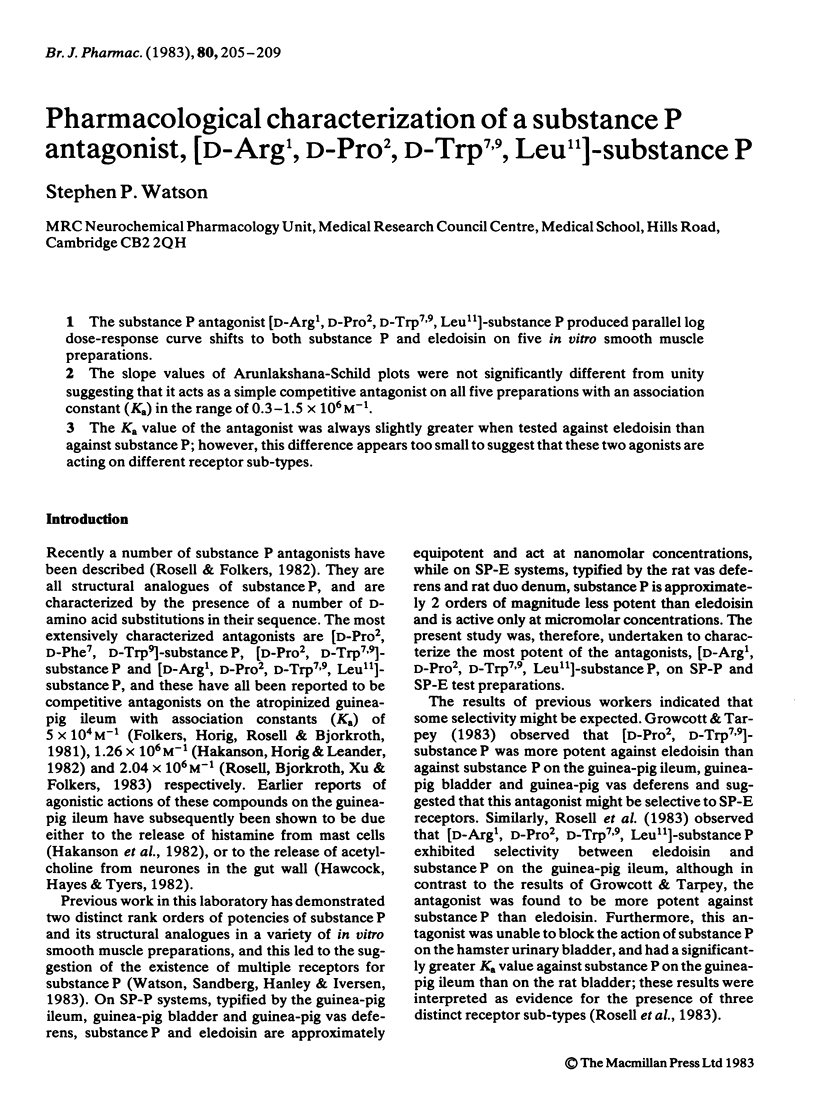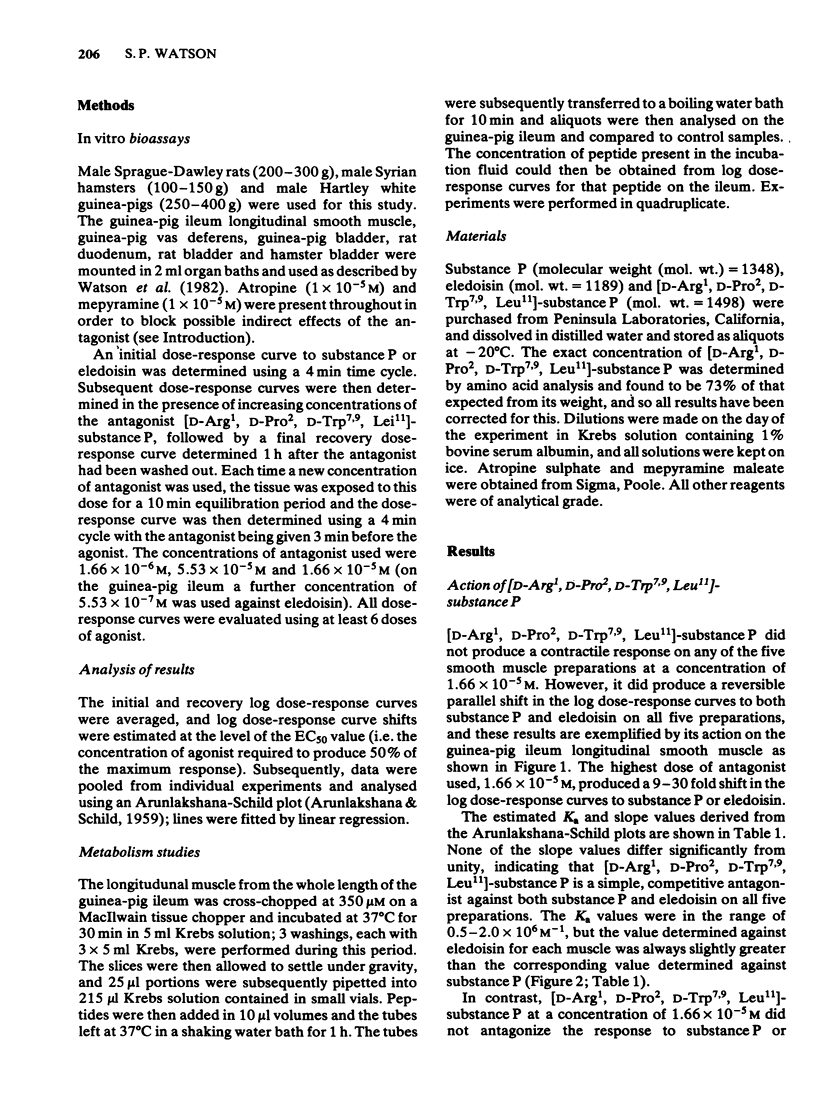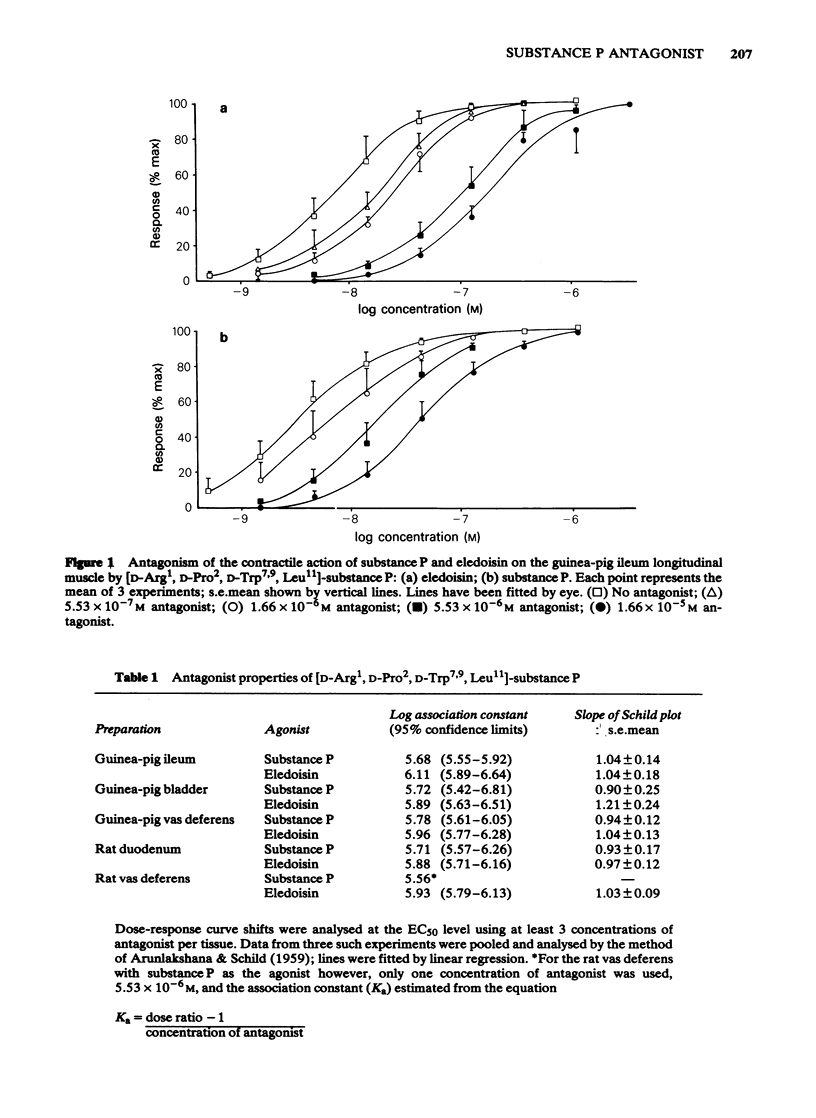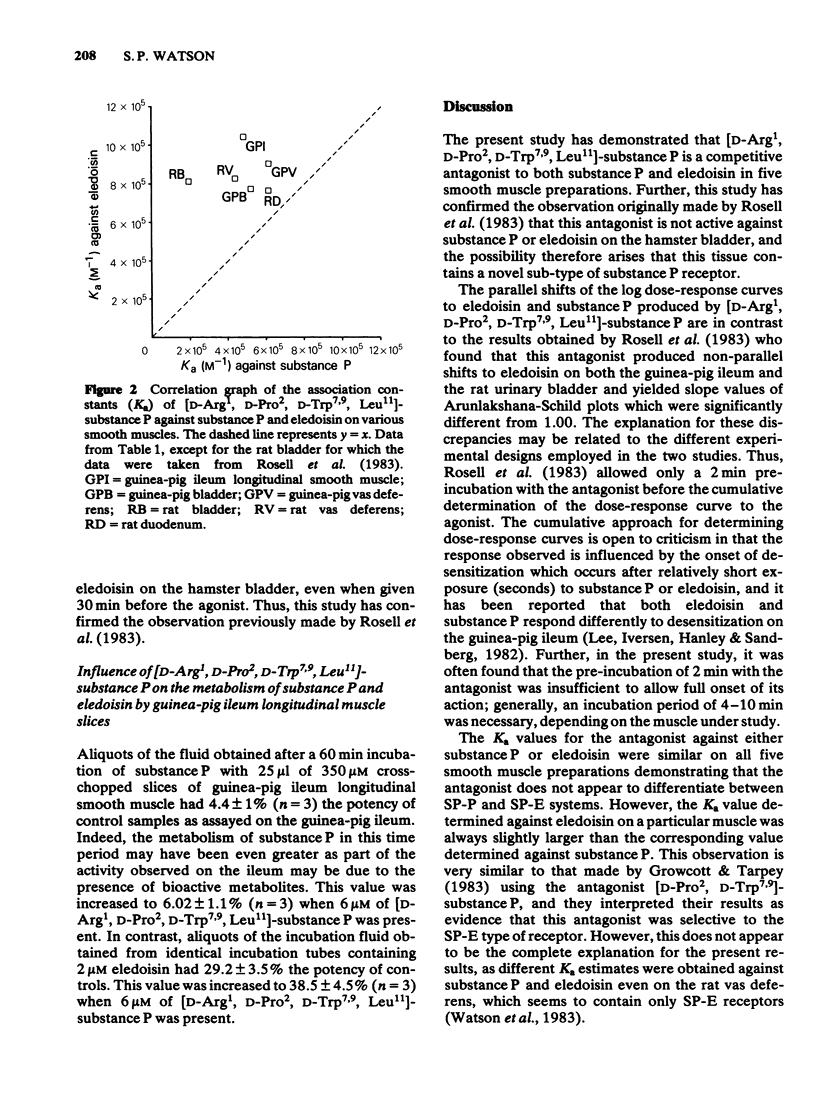Abstract
The substance P antagonist [D-Arg1,D-Pro2,D-Trp7,9,Leu11]-substance P produced parallel log dose-response curve shifts to both substance P and eledoisin on five in vitro smooth muscle preparations. The slope values of Arunlakshana-Schild plots were not significantly different from unity suggesting that it acts as a simple competitive antagonist on all five preparations with an association constant (Ka) in the range of 0.3-1.5 X 10(6)M-1. The Ka value of the antagonist was always slightly greater when tested against eledoisin than against substance P; however, this difference appears too small to suggest that these two agonists are acting on different receptor sub-types.
Full text
PDF




Selected References
These references are in PubMed. This may not be the complete list of references from this article.
- ARUNLAKSHANA O., SCHILD H. O. Some quantitative uses of drug antagonists. Br J Pharmacol Chemother. 1959 Mar;14(1):48–58. doi: 10.1111/j.1476-5381.1959.tb00928.x. [DOI] [PMC free article] [PubMed] [Google Scholar]
- Folkers K., Hörig J., Rosell S., Björkroth U. Chemical design of antagonists of substance P. Acta Physiol Scand. 1981 Apr;111(4):505–506. doi: 10.1111/j.1748-1716.1981.tb06771.x. [DOI] [PubMed] [Google Scholar]
- Hawcock A. B., Hayes A. G., Tyers M. B. Agonist effects of [D-Pro2,D-Phe7,D-Trp9]substance P--evidence for different receptors. Eur J Pharmacol. 1982 May 7;80(1):135–138. doi: 10.1016/0014-2999(82)90189-3. [DOI] [PubMed] [Google Scholar]
- Håkanson R., Hörig J., Leander S. The mechanism of action of a substance P antagonist (D-Pro2, D-Trp7,9)-SP. Br J Pharmacol. 1982 Dec;77(4):697–700. doi: 10.1111/j.1476-5381.1982.tb09348.x. [DOI] [PMC free article] [PubMed] [Google Scholar]
- Kenakin T. P. The Schild regression in the process of receptor classification. Can J Physiol Pharmacol. 1982 Mar;60(3):249–265. doi: 10.1139/y82-036. [DOI] [PubMed] [Google Scholar]
- Lee C. M., Iversen L. L., Hanley M. R., Sandberg B. E. The possible existence of multiple receptors for substance P. Naunyn Schmiedebergs Arch Pharmacol. 1982 Mar;318(4):281–287. doi: 10.1007/BF00501166. [DOI] [PubMed] [Google Scholar]
- Rosell S., Björkroth U., Xu J. C., Folkers K. The pharmacological profile of a substance P (SP) antagonist. Evidence for the existence of subpopulations of SP receptors. Acta Physiol Scand. 1983 Mar;117(3):445–449. doi: 10.1111/j.1748-1716.1983.tb00019.x. [DOI] [PubMed] [Google Scholar]
- Scholfield C. N. Baclofen blocks postsynaptic inhibition but not the effect of muscimol in the olfactory cortex. Br J Pharmacol. 1983 Jan;78(1):79–84. doi: 10.1111/j.1476-5381.1983.tb09365.x. [DOI] [PMC free article] [PubMed] [Google Scholar]
- Watson S. P. Rapid degradation of [3H]-substance p in guinea-pig ileum and rat vas deferens in vitro. Br J Pharmacol. 1983 Jun;79(2):543–552. doi: 10.1111/j.1476-5381.1983.tb11029.x. [DOI] [PMC free article] [PubMed] [Google Scholar]
- Watson S. P., Sandberg B. E., Hanley M. R., Iversen L. L. Tissue selectivity of substance P alkyl esters: suggesting multiple receptors. Eur J Pharmacol. 1983 Jan 28;87(1):77–84. doi: 10.1016/0014-2999(83)90052-3. [DOI] [PubMed] [Google Scholar]


